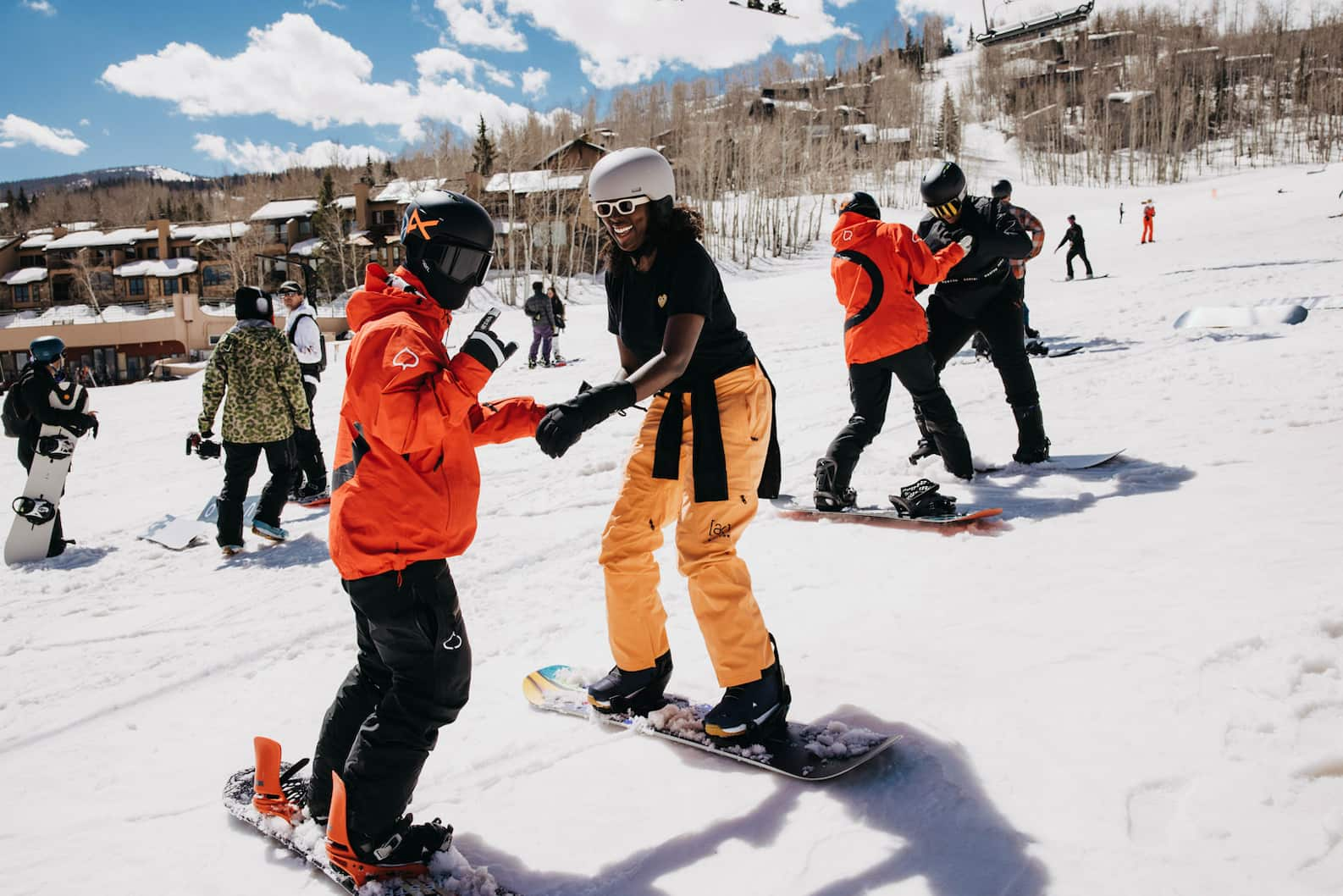Rise by Six: Your Daily Dose of Inspiration
Explore insights and stories that elevate your day.
Snowboard Shenanigans: Riding the Slopes with Style
Join the ultimate snowboard adventure! Discover tips, tricks, and epic moments as we ride the slopes with style and flair.
Top 10 Essential Snowboarding Tips for Beginners
Snowboarding can be an exhilarating sport, but as a beginner, it’s essential to have a solid foundation to ensure you have a safe and enjoyable experience. Here are ten essential snowboarding tips to help you get started:
- Dress Appropriately: Wearing the right clothing is crucial. Layer your clothing to stay warm and dry, and don’t forget protective gear like helmets and wrist guards.
- Understand Your Gear: Familiarize yourself with the parts of your snowboard and binding system. Properly adjusting your bindings can make a significant difference in your control and comfort.
- Learn to Fall: Falling is part of the learning process. Practice falling safely to reduce your risk of injury. Try to fall sideways rather than backward.
- Start on Flat Terrain: Before hitting the slopes, practice balancing and gliding on flat terrain to build confidence.
Once you’re comfortable with the basics, you can expand your skill set. Here are more tips to enhance your snowboarding experience:
- Find the Right Instructor: A qualified instructor can provide valuable feedback to help you progress faster and avoid developing bad habits.
- Practice Turning: Master the basics of turning to navigate the slopes effectively. Start with gentle turns and gradually increase your skill level as you gain confidence.
- Stay Relaxed: Tension can hinder your performance, so try to stay relaxed. A calm body is more flexible and responsive.
- Know Your Limits: Don’t push yourself too hard. Progress at your own pace and gradually take on more challenging runs as you gain experience.
- Have Fun: Lastly, always remember to enjoy yourself! The joy of snowboarding comes from the thrill of the ride and being in the great outdoors.

What to Wear: The Ultimate Guide to Snowboard Gear
When it comes to hitting the slopes, having the right snowboard gear is essential for both comfort and performance. Start with the foundation: base layers. These moisture-wicking garments help regulate your body temperature while keeping you dry. Look for materials like merino wool or synthetic fabrics that fit snugly but allow for flexibility. On top of your base layer, consider adding a mid-layer such as a fleece or puffy jacket for extra warmth. Finally, choose a waterproof outer layer, including a ski jacket and pants that protect against the elements, to ensure you stay warm and focused on your ride.
Don't forget the critical accessories that elevate your snowboard experience. Gloves or mittens are a must to keep your hands warm, while snowboard socks should be made from materials that wick moisture and provide cushioned support. Additionally, a quality helmet is vital for safety, so make sure it fits well and meets safety standards. Complete your look with goggles that provide UV protection and anti-fog features to enhance visibility in varying weather conditions. With the right snowboard gear, you're not just looking good—you're prepared for an unforgettable day on the mountain!
How to Choose the Perfect Snowboard for Your Riding Style
Choosing the perfect snowboard for your riding style is crucial for enhancing your performance on the slopes. Start by identifying how you intend to use your snowboard: are you planning to ride mostly on groomed trails, in the backcountry, or perhaps tackling the terrain park? Each of these riding styles demands different board specifications. For freeriders, a wider board can provide better float in powder, while freestyle riders may benefit from a shorter, flexible board that allows for easier tricks and jumps. Always consider the board's flexibility as well; stiffer boards tend to offer more stability at high speeds, while softer boards are more forgiving and easier to maneuver.
Another important aspect to consider is the board shape. There are several types including directional, symmetric, and directional twin. Each shape influences how the snowboard performs in different conditions. Additionally, don't forget about the size of the snowboard—your weight and height play significant roles in determining the ideal length. As a general rule of thumb, a longer snowboard will provide better stability at speed, while a shorter model will allow for easier turns and tricks. By aligning your selection with your individual preferences and riding style, you'll ensure a more enjoyable and effective snowboarding experience.